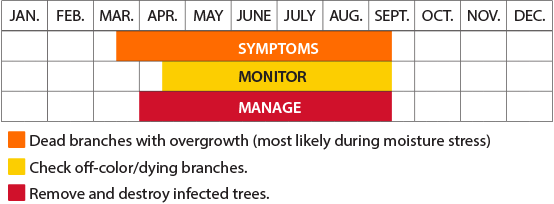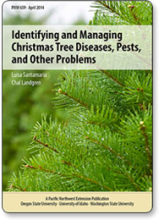- Pronounced cankers, often accompanied with overgrowth and thickening
- Cankers associated with off-color/dead branches on the tree
- Round, gray-black fruiting bodies (1.6 mm, produced by fungus) within the canker
- Diseases
- Insects
- Disorders
- Damage
- Weather Damage
- Frost Damage
- Winter Injury
- Drought
- Heat Damage
- Chemical Damage
- 2, 4-D and Triclopyr
- Fertilizer Burn
- Glyphosate (Roundup)
- Triazines
- Vertebrate Damage
- Deer, Elk, Mice & Voles
- Rabbits & Birds
- Mechanical Damage
- Mechanical Damage
- About
- Order


